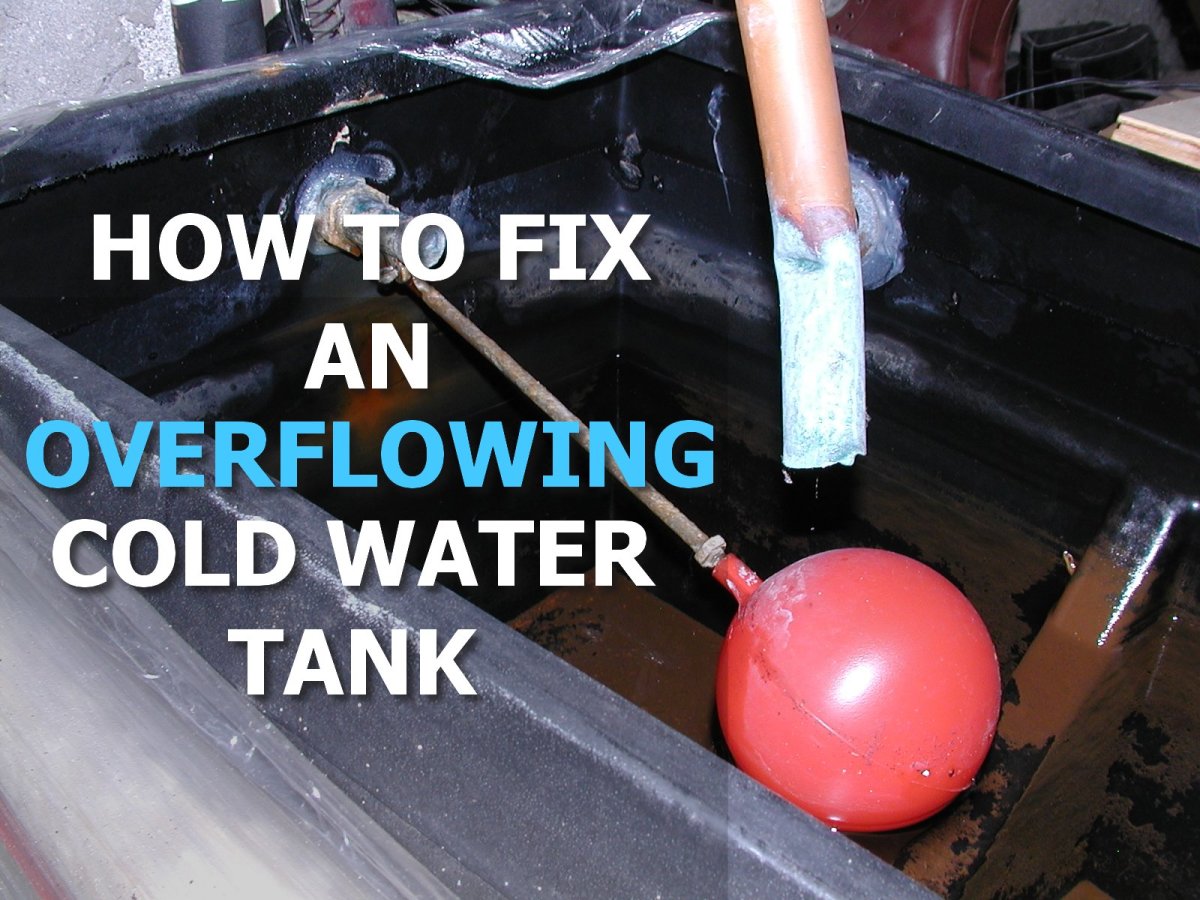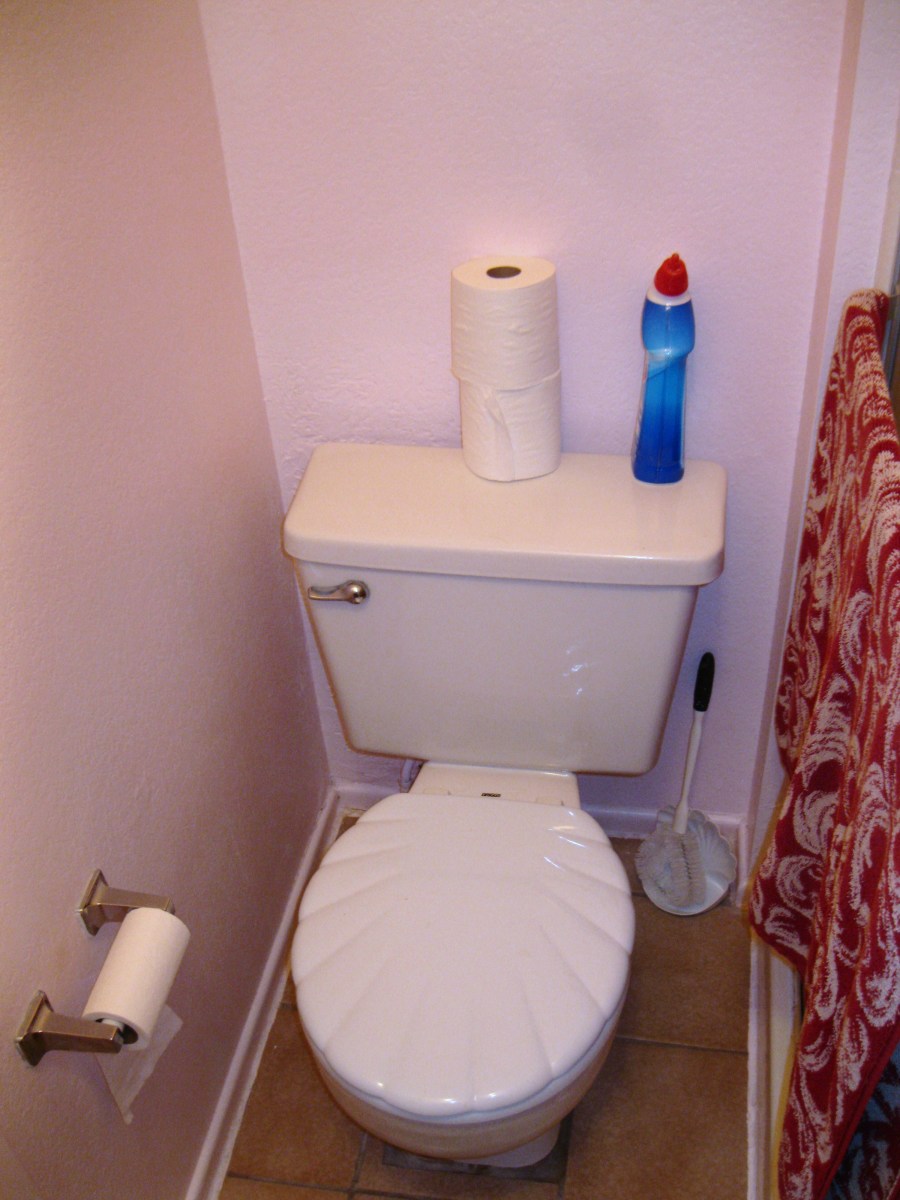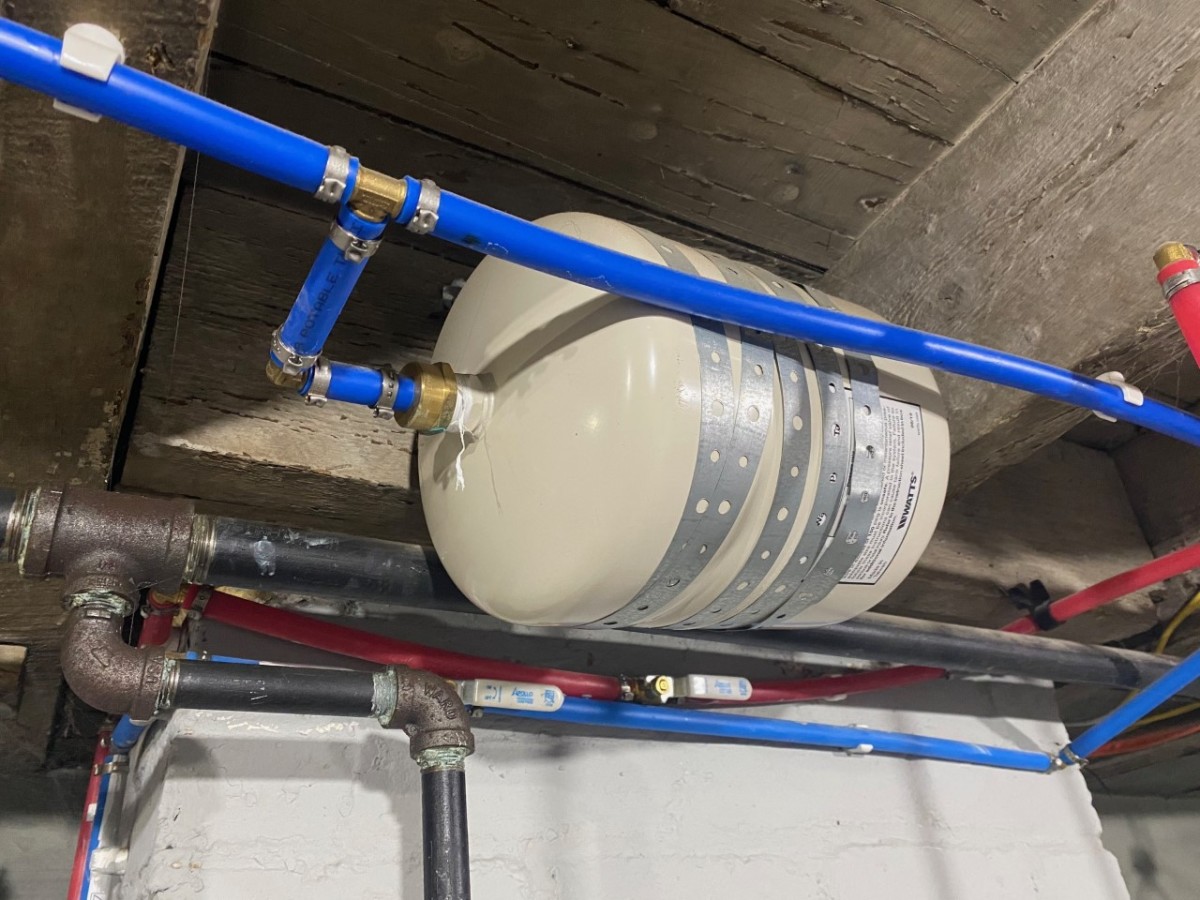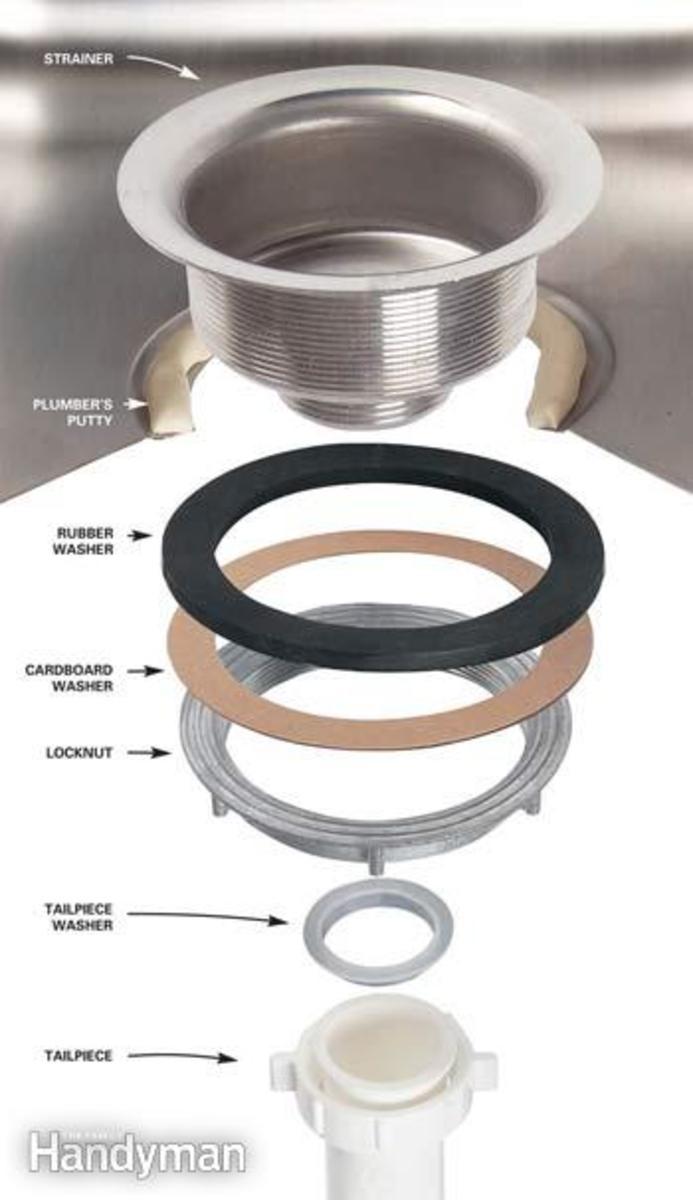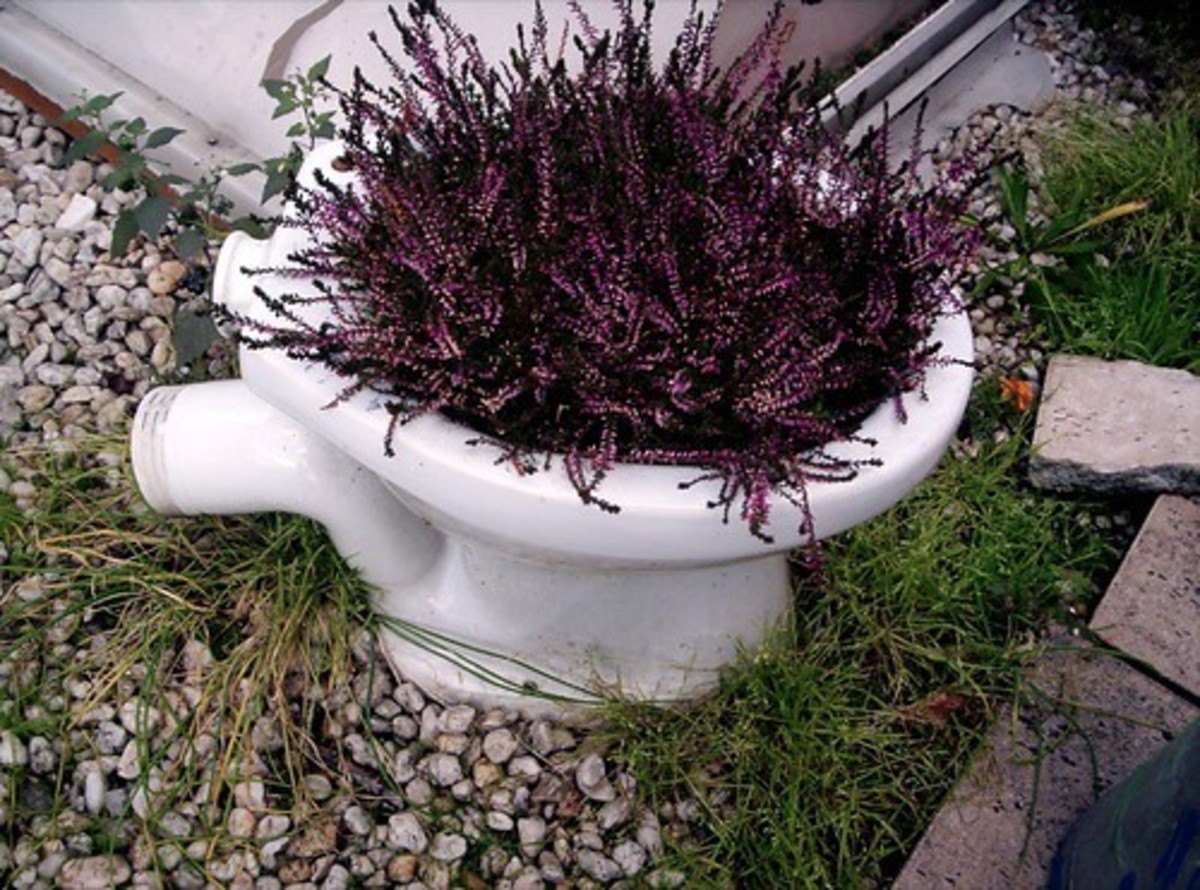THE WATER WORKS
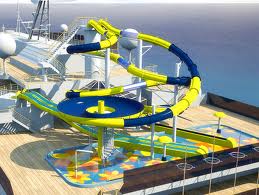
The Water Works
Major plumbing problems need the attention of a professional unless you are very skilled. But for simple leaks and overflows here is what you should know.
Modern houses have two different types of cistern. One is the cold water cistern for storage and the other is the flushing cistern for toilets. Water flows into both cisterns and is controlled by a valve fixed to a lever and a ball float. As the cistern fills, the float rises; its other end slides along an arm until it presses on a piston which closes the water inlet. If the valve sticks or breaks, flooding is prevented because the water goes out through an overflow pipe fitted inside the tank near the top. This leads to the outside of the house. If however a cistern overflows it may be because the float arm is set too high. On modern systems the ball float can be adjusted by lessening a nut and lowering it. With older systems, you can bend the arm down, using a pair of pipe grips or an adjustable spanner. Turn off the supply to the cistern first. This cuts off the water at a lower level in the tank. If this doesn't stop the overflow, check if there is water inside the ball; if necessary unscrew it and replace it with a new one. If you are not confident you can do the job, tie up the float arm to prevent water flowing into the tank. If a plumber can't come at once, operate the arm occasionally to let water into the cistern.
Another reason why a cistern overflows may be because the washer in the inlet valve needs cleaning or replacing. Turn off the water supply to the cistern, remove the split pin and take out the piston and clean it with fine steel wool. Unscrew the end cap of the valve, remove the rubber washer and, if it's worn fit a new one. Replace the piston, put back the split pin, turn on the water supply and see if the overflow has stopped.
Radiator Airlocks
Radiators which don't heat up properly or gurgle alarmingly have probably got an airlock in them. This is most common if the system has been turned off for a period of time. Take the key which should come with the system-or buy one at a hardware shop and open the vent valve at one end of the radiator, taking care to hold a jug or small bowl underneath to catch the water when it flows. At first you will get a hissing sound as the excess air bleeds out; once the water starts to flow freely, you have cleared the air lock and should tighten the valve again.
Pipe Problems
You know you have got an airlock in your pipes if, when you turn on a tap, the water trickles out feebly rather than flowing freely. It may even stop completely. This is usually accompanied by a knocking noise in the pipes. You can cure it yourself if you have separate hot and cold taps in the kitchen but will need the services of a plumber if you have a mixer tap.
Take a piece of hosepipe and two adjustable clips and fit the hose in a U-shape between the hot and cold taps, tight ending the clip with a screwdriver. Turn on first the hot and then the cold tap. Let them run for a few minutes so that the mains pressure from the cold tap can force the water and air back through the pipes into the hot water storage tank or cylinder. This should eliminate the airlock. If it doesn't work after five minutes or so, stop then try again. After 20 minutes with no success call a plumber.
Leaking Pipes
If a pipe starts to leak near a cold water storage cistern, turn off the stop tap close to the cistern. Otherwise turn off the water supply at the main stopcock. Open all taps and flush the look to empty the cistern quickly. It is important for every householder to know where the stopcock is and to keep it in a condition where it can be turned reasonably easily without the use of tools. Note that before turning off the water supply, you should switch off gas-or-oil-fired boilers and electric immersion heaters. If your water is heated by solid fuel, shovel as much as you can out of the boiler into a metal bucket to help it cool down quickly.
Copper pipes which fail at compression joints sometimes just need the nuts on either side of the joint to be tightened. If this doesn't work or if the leak is on the pipe itself turn the water off and drain the pipe, then make a temporary repair by giving the area a quick coat of epoxy resin adhesive and binding it round first with rags and then with polythene taps. Or keep a special repair kit handily and use this. Leaks in lead pipes usually occur because the pipe has split. Turn off the water supply and tap the split. with a hammer to try and close it. Call a plumber quickly.
Frozen Pipes
To avoid frozen pipes, take precautions when the temperature starts to drop. Keep plugs in position in baths, sinks and basins to prevent the outlets being blocked by ice. If you have dripping taps that really need new washers put salt in the waste traps to help prevent freezing.
If pipes do freeze up in spite of this play a hair dryer along the length of the frozen area starting at the tap end and working back to the tank. If you can't thaw the pipes fairly quickly, call a plumber. In any case check the joints on copper piping afterwards, as freezing often pushes them out of their compression fittings.
Burst Pipes
When a pipe bursts, turn on all the cold water taps in the house and turn off the main stopcock. Wrap old towels or rags around the burst section. If the pipes are part of the hot water system, turn off the boiler or immersion heater. Call a plumber to repair the damage.
Blocked Sinks
Sinks which aren't blocked too seriously can usually be cleared by an application of a proprietary drain cleaner, following the manufacturer's instructions, or by putting down a handful of washing soda dissolved in half a liter of hot water.
Failing this you will need to use a sink plunger. Block off the overflow handwork the plunger up and down. Don't be too vigorous with basins or you may pull them away from the wall.
For really bad blockages, follow the procedure below and, if that does not work, call the plumber.

